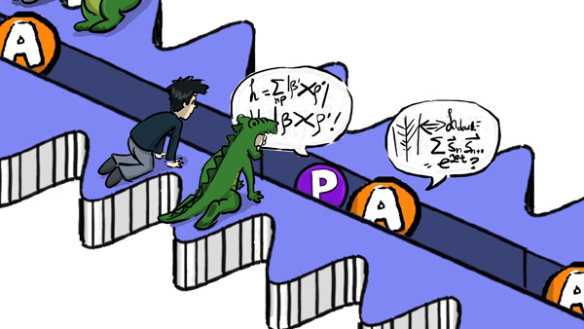Confused by how particles can be in two places at once? Wondering how particles can instantly communicate with each other no matter what the distance? Quantum physics is a field of study that defies common sense at every turn, and quantum entanglement might lead the way in the defying common sense department. Entanglement is the unusual behavior of elementary particles where they become linked so that when something happens to one, something happens to the other; no matter how far apart they are. This bizarre behavior of particles that become inextricably linked together is what Einstein supposedly called “spooky action at a distance.”
This new video from PHD Comics provides a combination of live action and animation to try to explain entanglement.
“Not surprisingly, it was really hard to draw this video,” says animator Jorge Cham. “How do you depict something that has never existed before? And more importantly, do you draw alligators differently from crocodiles?”
Yes, that sentence actually makes sense when it comes to entanglement. And the advice at the end of the video from physicist Jeff Kimble is applicable to entanglement — and life in general — as well: “If you know what you’re doing, don’t do it…”


“Entanglement is the unusual behavior of elementary particles where they become linked so that when something happens to one, something happens to the other; no matter how far apart they are.”
Maybe they are “GENETICALLY” connected in the sense that identical twins sometimes have these experiences no matter where they are.
Just a thought.
All particles, whether they be photons, electrons, atoms are identical. There is no way to distinguish a carbon atom in the air you breathe from, say, the carbon atom in your DNA. They are all the same. Entanglement is different in that they are linked and can share complementary states. So one is spin up and the other will be spin down when you look at it. Before you look, they are in both states at the same time or a superposition of states.
When you look at them, you interfere with this superposition. Has nothing to do with consciousness or obseving but the fact that you need to use photons to see. So the act of observing interferes with the system. The fascinating thing is that when one particle is observed to be spin up, the other is immediately observed to be spin down no matter their distance. If we transported one entangled particle to another galaxy and did the same measurement, the same outcome would happen.